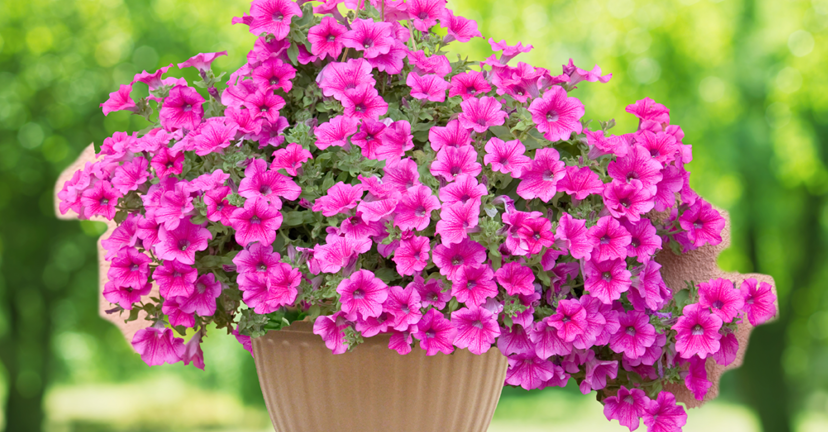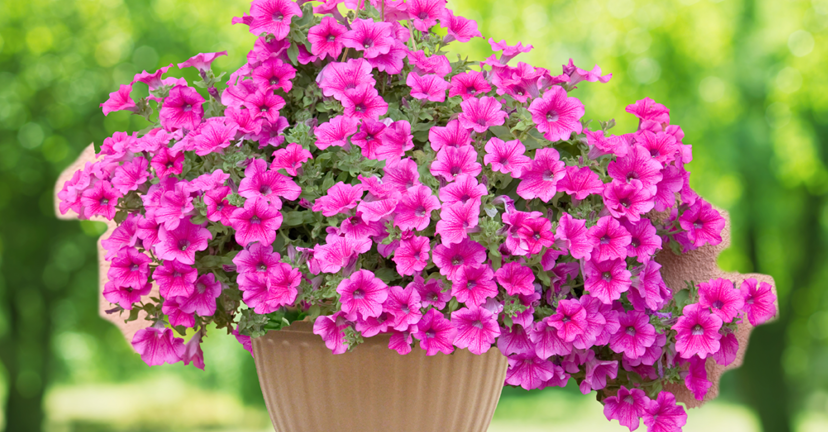
Haleigh Eustis
Floral Intern
Happy July! Summer is a wonderful time of year for so many reasons; the sun is shining, the air is warm, the sky is blue and it’s the perfect season to tend to potted plants. Caring for plants is a great hobby for the summer, but it may be overwhelming to decide which plants to tend to successfully. If you’re a beginner in plant care, fear not, I can help! Here is the beginners guide to (successful) plant growth.
African Violets: A beautiful flower for the summer season that is easy to care for! The African Violet requires a lot of bright indirect sunlight, as it enjoys warm temperatures and minimal water. It’s better to have slightly damp soil, rather than soggy soil as it will rot the roots of your plant! Though the flower’s needs are minimal, make sure you don’t water the petals of your African Violet, or it will brown and wither. Focus solely on the soil! Fertilize your flower every other week to ensure proper plant health.
Peace Lilies: Who knew Peace Lilies were an easy flower to tend to? Well, now you know! This beautiful and elegant flower requires warm weather, but not direct sunlight! Find a good spot that’s near a window, but not directly in front of one. Peace Lilies don’t require constant watering; they require water once their soil has dried out from their last watering. While watering your flowers, make sure your soil is damp, not soaking! Over watering will rot the roots of your flower, which will inevitably kill the plant. Your Peace Lily also requires fertilization every two weeks.
Ivy Plant: Last, but definitely not least, is the Ivy plant! This beautiful plant is growing in popularity as it’s used frequently for its “aesthetic” look. If you’re looking to follow a popular trend right now, or you just think it’s beautiful to look at, caring for Ivy is simple! This plant requires a lot of indirect sunlight. If you’re a beginner plant owner and don’t know what the term “indirect sunlight” is, it’s okay! Indirect sunlight is something that interferes between your plant and the sun itself. In most cases, your “medium” or barrier between the sun and plant will be a window. If you find that your plants are drying out and withering, use sheer curtains as an extra barrier. As well as a barrier, your Ivy’s soil will need to be watered once your topsoil is no longer damp. Don’t over water though, as it will lead to root rot. Fertilize every month, and voila! Ivy maintenance has never been this easy!
There you have it, with this guide you’re now a master plant owner! Shop all your summer floral needs at Price Chopper/Market 32 Floral Department!

Mia Teal
Marketing Coordinator, Paid Media
The beauty of summer is now surrounding us. From the full, bright green trees to colorful flowers planted on the lawns of our neighbors and local businesses, there is so much to smile about. If you are interested in adding some summer fun to your lawn, you have come to the right place. We have a few tips on how to make the outside of your home look fabulous, one plant at a time. While this will require some work and patience, you will be thrilled by the outcome.
- Do Some Research: What type of flowers or plants are you interested in having outside your home? Hanging plants? Flowers that must be physically planted? Having an idea of what you are looking for will help before you go shopping.
- Clear the Ground: If you chose hanging flowers, then water them and you are all set! However, if you bought potted plants, it is time to get started. Make sure all weeds and rocks are fully removed from the ground.
- Measure Where to Plant: It is important to set the plants down to get an idea of where you want your plants and how far apart they should be placed.
- Start Planting: Smooth soil with a rake before planting. Once completed, dig a hole the same length as the container the plant was in. Once the plant is in, fill with the soil you just dug out.
- Time to water: Water at the base of your plants and then add bark mulch. This will help retain the water moisture.
We hope your new plants bring some beautiful color to your yard!


